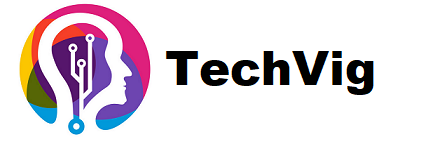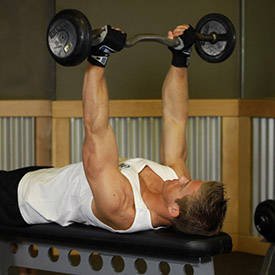We’re here to discuss the most effective approach to using skull crushers to develop monster triceps. Triceps extensions, or “skull crushers,” are an excellent way to gain strength and size in those muscles. The triceps muscles on the back of the arm are the focus of this workout. Skull crushers develop strength and power while toning and building your triceps. Add these to your workout program to obtain the benefits.
Introduction
Your triceps are the muscles on the back of your upper arm. They extend your elbow joint and are responsible for straightening your arm. Having strong triceps can make your arms look bigger and more muscular. They can also help you perform everyday tasks such as opening jars and lifting heavy objects.
One of the best exercises for building triceps is the skull crusher. Skull crushers work the long head of the triceps, which is the largest and strongest head of the muscle. To do a skull crusher, you will need a weight bench and a barbell or dumbbells.
Importance of Strong Triceps
Having strong triceps is not only essential for achieving well-rounded arm development but also plays a crucial role in various upper body movements. The triceps muscle, located on the back of the upper arm, is responsible for extending the elbow joint. It is involved in essential activities like pushing, lifting, and stabilizing weight during exercises such as bench presses, dips, and overhead presses.
Strong triceps contribute to overall arm strength and stability, enhancing performance in sports, weightlifting, and daily activities. Additionally, well-developed triceps can provide aesthetic benefits by giving the arms a defined and muscular appearance.
Overview of Skull Crushers Exercise
Skull crushers, also known as lying triceps extensions, are a popular exercise specifically designed to target and strengthen the triceps muscles. This exercise effectively isolates the triceps, allowing for intense and focused muscle activation.
Skull crushers involve extending the elbows against resistance while lying on a bench, hence the name “skull crushers.” By utilizing various equipment variations and techniques, such as dumbbells, barbells, or cables, you can customize the exercise to suit your preferences and training goals.
How to Do Skull Crushers
- Lie on a weight bench with your feet flat on the floor and your knees bent.
- Hold the barbell or dumbbells with an overhand grip, with your hands slightly wider than shoulder-width apart.
- Lower the weight behind your head until your elbows are at a 90-degree angle.
- Pause for a moment, then press the weight back up to the starting position.
- Repeat for the desired number of repetitions.
Benefits of Skull Crushers for Triceps
Isolation of the Triceps
One of the key advantages of skull crushers is their ability to isolate the triceps muscles effectively. By lying on a bench and performing the exercise, you minimize the involvement of other muscles, such as the shoulders or chest, allowing the triceps to be the primary focus. This isolation maximizes the intensity and effectiveness of the exercise, ensuring that the triceps receive the majority of the workload.
Enhanced Muscle Activation
Skull crushers provide a high level of muscle activation in the triceps. The exercise involves extending the elbows against resistance, which recruits the triceps muscles to generate force and control the movement. This concentrated activation stimulates the triceps fibers, leading to increased muscle engagement and growth.
Potential for Muscle Hypertrophy
Muscle hypertrophy, or the increase in muscle size, is a common goal for many individuals looking to build impressive triceps. Skull crushers offer an effective means of achieving this goal. The exercise places a significant amount of tension on the triceps muscles, especially the long head, which is responsible for much of the overall triceps mass. With consistent training and progressive overload, skull crushers can promote muscle hypertrophy in the triceps, resulting in larger and more defined arms.
Improved Lockout Strength
Lockout strength refers to the ability to fully extend the elbows and lock them in a stable position. Strong triceps are crucial for activities such as bench presses, push-ups, and overhead lifts, where full extension is required. Skull crushers target the triceps in their fully lengthened position, helping to strengthen the muscles and improve lockout strength. This increased strength translates to improved performance in various upper body exercises, allowing you to lift more weight and achieve better overall results.
Tips for Doing Skull Crushers
- Keep your elbows close to your sides throughout the movement.
- Don’t let your shoulders lift off the bench.
- Lower the weight slowly and controlled.
- Don’t cheat by using momentum to lift the weight.
Proper Technique and Execution
Equipment and Setup
- Before performing skull crushers, ensure that you have the necessary equipment ready. Depending on your preference and availability, you can use dumbbells, an EZ-bar, a barbell, or a cable machine. Choose a weight that challenges you but allows you to maintain proper form throughout the exercise.
- Set up a flat bench or an incline bench at a comfortable height. Position it in an area with ample space to allow for a full range of motion during the exercise.
Body Positioning
- Lie down on the bench with your back flat against it. Ensure that your head, shoulders, and buttocks are in contact with the bench throughout the exercise.
- Grab the chosen equipment with an overhand grip, keeping your hands slightly wider than shoulder-width apart. If using dumbbells, hold one in each hand.
- Extend your arms straight above your chest, perpendicular to the floor, with the equipment in hand.
Step-by-Step Execution Guide
- Starting with your arms extended, slowly lower the equipment towards your forehead by bending your elbows. Keep your upper arms stationary and perpendicular to the floor throughout the movement.
- Lower the equipment until it is close to or touches your forehead, just above the hairline.
- Pause briefly in this position, feeling the stretch in your triceps.
- Engage your triceps and extend your arms back to the starting position by straightening your elbows. Keep your wrists stable and maintain control throughout the movement.
Common Mistakes to Avoid
- Flaring Elbows: Avoid allowing your elbows to flare out to the sides during the lowering phase of the exercise. This can shift the focus away from the triceps and put unnecessary strain on the shoulders. Keep your elbows in a fixed position perpendicular to the floor.
- Using Excessive Momentum: Avoid using momentum to lift the weight during skull crushers. Focus on slow and controlled movements, emphasizing the contraction of the triceps throughout the exercise. Using momentum diminishes the effectiveness of the exercise and increases the risk of injury.
- Poor Lowering Technique: Maintain control as you lower the weight, ensuring that you do not drop it too quickly or allow it to crash onto your forehead. Control the descent and feel the stretch in your triceps before initiating the upward phase.
- Insufficient Range of Motion: Aim to achieve a full range of motion by lowering the weight until it is close to or touches your forehead. This allows for maximal activation of the triceps muscles. However, be mindful not to hyperextend your elbows at the top of the movement.
How Often Should You Do Skull Crushers?
You should do skull crushers 2-3 times per week. If you are a beginner, start with 3 sets of 8-12 repetitions per set. As you get stronger, you can increase the weight and the number of repetitions.
Other Exercises for Building Triceps
- Close-grip bench press
- Triceps pushdowns
- Overhead triceps extensions
- Triceps kickbacks
- Dips
Variations of Skull Crushers
To add variety and target your triceps from different angles, there are several variations of the skull crushers exercise that you can incorporate into your training routine. Let’s explore these variations:
Dumbbell Skull Crushers
Dumbbell skull crushers are a popular variation that allows for individual arm movement and increased stability. Here’s how to perform them:
- Lie down on a bench with a dumbbell in each hand, palms facing each other.
- Extend your arms straight above your chest, perpendicular to the floor.
- Lower the dumbbells towards your forehead by bending your elbows.
- Pause briefly at the bottom, feeling the stretch in your triceps.
- Engage your triceps and extend your arms back to the starting position.
EZ-Bar Skull Crushers
Using an EZ-bar provides a more comfortable grip and may alleviate stress on the wrists. Here’s how to perform EZ-bar skull crushers:
- Lie down on a bench and grasp the EZ-bar with an overhand grip, hands slightly wider than shoulder-width apart.
- Extend your arms straight above your chest, perpendicular to the floor.
- Lower the bar towards your forehead by bending your elbows, keeping your upper arms stationary.
- Pause briefly at the bottom, feeling the stretch in your triceps.
- Engage your triceps and extend your arms back to the starting position.
Cable Skull Crushers
Performing skull crushers with a cable machine provides constant tension throughout the movement. Here’s how to do cable skull crushers:
- Attach a straight bar or rope handle to a cable machine at a high position.
- Stand facing away from the machine, with your feet shoulder-width apart.
- Grab the bar or handles with an overhand grip, hands slightly wider than shoulder-width apart.
- Lean forward slightly, engaging your core and maintaining a stable position.
- Extend your arms forward, keeping your elbows slightly bent.
- Lower the bar or handles towards your forehead by bending your elbows.
- Pause briefly at the bottom, feeling the stretch in your triceps.
- Engage your triceps and extend your arms back to the starting position.
Close-Grip Bench Press
The close-grip bench press is a compound exercise that primarily targets the chest but also engages the triceps effectively. Here’s how to perform it:
- Lie down on a bench with your feet flat on the floor and grasp the barbell with a grip narrower than shoulder-width apart.
- Unrack the barbell and position it above your chest with your arms fully extended.
- Lower the barbell towards your lower chest by bending your elbows, keeping them close to your sides.
- Pause briefly at the bottom, feeling the stretch in your triceps.
- Push the barbell back up to the starting position by extending your arms.
Potential Risks and Precautions
While skull crushers can be an effective exercise for triceps development, it’s important to be aware of potential risks and take necessary precautions to ensure safe and effective workouts. Here are some important considerations:
A. Warm-up and Stretching
Before performing skull crushers or any intense exercise, it’s essential to warm up your muscles and prepare them for the workout. Engage in light cardiovascular activity, such as jogging or cycling, to increase blood flow to the muscles. Additionally, perform dynamic stretches that target the triceps, shoulders, and wrists to improve joint mobility and flexibility.
B. Proper Form and Technique
Maintaining proper form and technique is crucial to prevent injuries and maximize the benefits of skull crushers. Follow these guidelines:
- Keep your back flat against the bench throughout the exercise to maintain stability and avoid unnecessary strain on the lower back.
- Avoid excessive arching or lifting of the hips during the movement.
- Control the weight throughout the entire range of motion, focusing on the contraction of the triceps.
- Avoid locking out your elbows at the top of the movement to prevent undue stress on the joint.
- If using an EZ-bar or dumbbells, maintain a secure grip and ensure that your wrists are in a neutral position to minimize strain.
C. Listening to Your Body
Pay attention to your body’s signals during skull crushers. If you experience any sharp pain, discomfort, or unusual sensations, stop the exercise immediately. It’s important to differentiate between the burn and discomfort associated with muscle fatigue and pain that may indicate an injury. If you’re uncertain, consult a healthcare professional for proper assessment.
D. Consulting a Professional
If you’re new to skull crushers or weightlifting in general, consider consulting a qualified fitness professional or strength coach. They can provide guidance on proper technique, exercise selection, and individualized programming based on your goals, fitness level, and any pre-existing conditions or limitations.
Remember, your safety and well-being should always be a top priority when engaging in any exercise program. By following proper precautions and seeking guidance when needed, you can minimize the risks and maximize the benefits of skull crushers.
Tracking Progress and Setting Goals
To effectively build insane triceps with skull crushers, it’s important to track your progress and set specific goals. This allows you to monitor your improvements and make adjustments to your training program. Here are some strategies for tracking progress and setting goals:
A. Tracking Triceps Strength and Size
- Strength Measurements: Track your progress by recording the weight you use for skull crushers and other triceps exercises. Regularly increase the weight as you become stronger. This can be done by keeping a workout log or using a fitness tracking app.
- Body Measurements: Measure the circumference of your upper arms periodically to track changes in triceps size. This can help you assess muscle growth and overall progress.
- Performance Improvements: Pay attention to how many repetitions you can perform with a given weight. Aim to increase the number of reps or sets over time as your triceps become stronger.
B. Goal Setting and Adjustments
- Specificity: Set specific goals for triceps strength and size that are measurable and attainable. For example, aim to increase your skull crusher weight by a certain percentage or add an inch to your upper arm circumference within a specific timeframe.
- Short-term and Long-term Goals: Break down your goals into short-term and long-term targets. Short-term goals may include increasing weight or reps within a few weeks, while long-term goals can be achieved over several months or even years.
- Periodization: Consider implementing periodization in your training program. This involves dividing your training into specific phases, such as strength-focused, hypertrophy-focused, or power-focused phases. Adjust your training variables (e.g., intensity, volume, exercise selection) accordingly to target different aspects of triceps development.
- Regular Assessments: Reassess your goals and progress regularly. If you’re not seeing the desired results, adjust your training program by altering variables like exercise selection, rep ranges, rest periods, or training frequency. Be open to experimenting and finding what works best for your triceps development.
- Celebrate Milestones: Acknowledge and celebrate your achievements along the way. Recognize the progress you’ve made and use it as motivation to continue pushing towards your goals.
Conclusion
Skull crushers are a great exercise for building insane triceps. By following the tips in this article, you can ensure that you are doing skull crushers correctly and safely. With consistent effort, you will soon see results in the form of bigger, stronger triceps.







